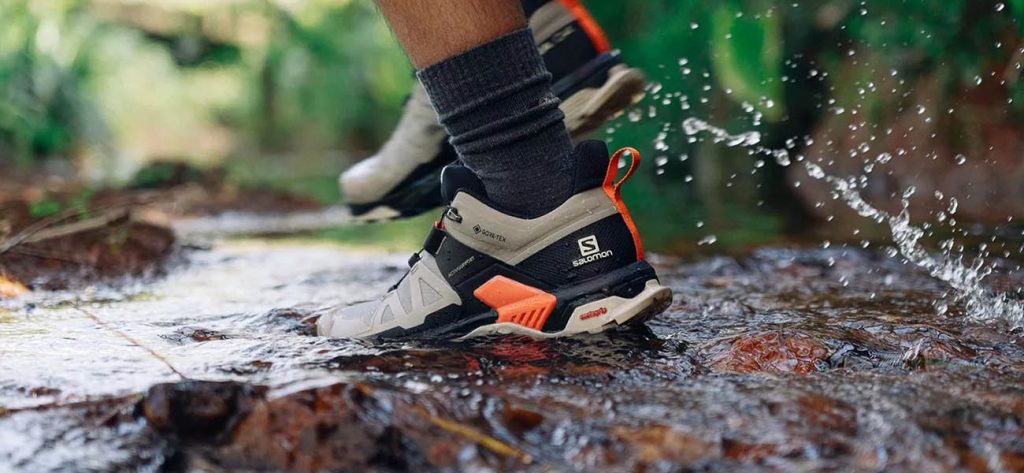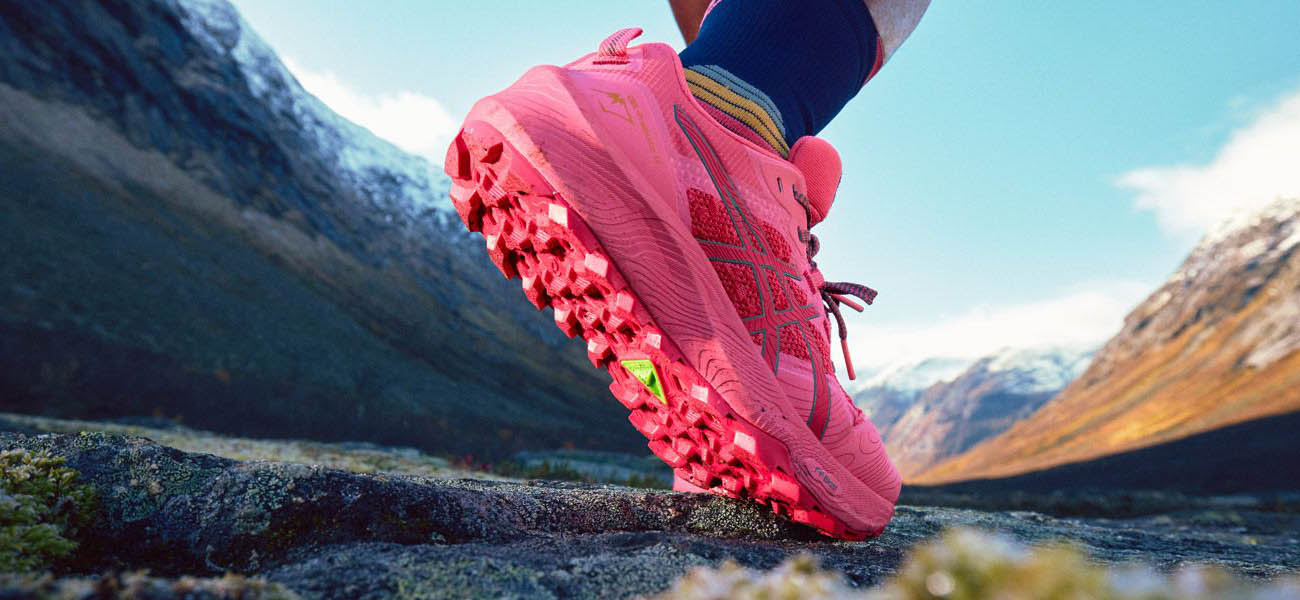In the world of athletic footwear, trail running shoes and road running shoes might seem similar at first glance, but they are designed for distinctly different purposes. Whether you’re a city runner or a trail newbie, understanding the differences between these two types of shoes is crucial for choosing the right pair. We will delve into the distinctions between trail running shoes and road running shoes, helping you make an informed decision based on your running style.
What Are Trail Running Shoes?
Trail running shoes are specifically designed for running on uneven, rugged, and varied terrains. These shoes need to provide excellent traction and protect your feet from rocks, branches, and other obstacles. Here are some key features of trail running shoes:
- Outsole Design: The outsole is arguably the most critical component of a trail running shoe, and it distinguishes trail shoes from their road-running counterparts. Trail running shoes usually have deep, aggressive tread patterns known as lugs. These lugs dig into the ground, providing superior grip and slip resistance, which is essential for maintaining stability on muddy, slippery, and loose surfaces. The rubber compounds used in the outsoles are typically stickier and more durable, offering enhanced traction on rocks, roots, and other uneven terrains.
- Protection: Running on trails means encountering unpredictable obstacles such as rocks, roots, and debris. To safeguard your feet, trail running shoes often come with reinforced toe caps and sidewalls. These protective features shield your toes from injuries caused by sharp objects and provide additional support to the sides of your feet, preventing sprains and strains. Some models even include rock plates in the midsole to protect the soles of your feet from sharp rocks.
- Durability: The materials used in trail running shoes are chosen for their ability to withstand harsh environments. The uppers are typically constructed from tough, abrasion-resistant fabrics like reinforced mesh or synthetic leather. These materials not only resist wear and tear but also offer breathability to keep your feet cool and dry. The stitching and overall construction are designed to endure the constant flexing and impact associated with trail running, ensuring the shoes last longer under demanding conditions.
- Support and Cushioning: The midsoles of trail running shoes are engineered to provide enhanced support and cushioning, crucial for handling the impact of uneven terrain. Many trail running shoes feature dual-density midsoles, combining a softer layer for comfort with a firmer layer for stability. This design helps to absorb shock and reduce the strain on your joints. Additionally, some trail shoes incorporate anti-torsion features, such as medial posts or TPU shanks, which help maintain balance and prevent excessive twisting of the foot on rugged paths.
What Are Road Running Shoes?
Road running shoes are designed for running on hard, flat surfaces such as asphalt and concrete. These shoes focus on being lightweight, comfortable, and promoting natural movement during runs. Here are some key features of road running shoes:
- Lightweight Design: Road running shoes are generally lighter than trail running shoes, as they don’t need to deal with complex terrains. The lightweight design helps reduce fatigue during long-distance runs.
- Cushioning: The cushioning in road running shoes is typically softer to absorb the impact of hard surfaces, protecting your knees and ankles. The outsoles are often made of soft foam or air cushioning technology, providing a comfortable running experience.
- Breathability: To enhance comfort during runs, road running shoes are often made with breathable materials that help wick away sweat and keep your feet dry.
- Flexibility: The design of road running shoes emphasizes natural foot movement, with more flexible soles that allow a greater range of motion during runs.
What Is Your Running Style?
Choosing the right pair of running or trail running shoes starts with understanding your running style. Here are some factors that can influence your choice:
- Running Environment:
If you primarily run in urban areas, a pair of lightweight and well-cushioned road running shoes will be more suitable. Road running shoes are designed to provide comfort and efficiency on paved surfaces, such as city streets, sidewalks, and park trails. These shoes often have a smoother outsole with less aggressive tread patterns, making them ideal for maintaining grip on flat and hard surfaces while reducing wear and tear.
However, if you enjoy running on mountain trails, in forests, or on other natural terrains, trail running shoes will provide better protection and traction. Trail running shoes are built to handle rough, uneven grounds, and their outsoles feature deeper lugs and stickier rubber compounds for better grip on loose dirt, mud, and rocks. The added protection from toe caps and reinforced uppers also helps prevent injuries from obstacles commonly found on trails.
- Running Distance:
The length of your runs can significantly impact your choice of shoes. Long-distance runs require more focus on comfort and cushioning, making road running shoes a better choice. The cushioning systems in road running shoes are designed to absorb the repeated impact of long runs on hard surfaces, helping to protect your joints and reduce fatigue over time. Additionally, the lightweight nature of these shoes can help conserve energy during extended runs.

For short-distance runs or trail runs with frequent turns and speed changes, the stability and anti-slip features of trail running shoes are essential. Trail running often involves quick direction changes, uneven surfaces, and varying inclines, requiring shoes that offer stability and prevent slipping. The robust construction of trail shoes provides the necessary support and protection for these dynamic and challenging conditions.
- Personal Preferences:
Personal preferences play a crucial role in selecting the right running shoes. Some runners prefer lighter shoes for a more minimalistic feel, while others prioritize protection and support.
- Lighter Shoes: If you prefer a lightweight shoe, road running shoes might be more appealing due to their streamlined design and reduced weight. These shoes offer a more natural running experience and can help improve speed and agility.
- Protection and Support: For those who prioritize protection and support, trail running shoes offer the necessary features to keep your feet safe and stable on rugged terrain. The reinforced materials, added cushioning, and protective elements in trail shoes provide peace of mind during challenging runs.
Trying on different shoes based on your running experience and preferences can help you find the best fit. Visiting a specialty running store where you can test various models and receive expert advice can be particularly beneficial.
- Foot Structure:
Understanding your foot structure, including arch type and gait, is also important when choosing running shoes. These factors influence the type of support and cushioning you need to prevent injuries and enhance performance.
Gait: Your gait, or the way you run, can also influence shoe selection. Overpronation (excessive inward roll), neutral pronation (natural inward roll), and supination (outward roll) are common gait patterns. Knowing your gait type can help you choose shoes with the appropriate level of support and cushioning to promote a healthy running stride.
Arch Type: Your arch type (high arch, normal arch, low arch) affects how your foot distributes weight and absorbs impact. Running shoes come in different support categories, such as neutral, stability, and motion control, to accommodate various arch types. For example, runners with low arches (flat feet) may benefit from stability or motion control shoes that provide extra support to prevent overpronation.

Recommended Brands
- Salomon: As a leading brand in trail running shoes, Salomon is known for its exceptional grip and protective features. The Salomon Speedcross series, for example, is perfect for various complex terrains.
- Hoka One One: Hoka One One stands out in the running shoe market with its superior cushioning and comfort. The Hoka Clifton series is ideal for long-distance runs.
- Asics: Asics is beloved by runners for both their running and trail running shoes. The Gel-Kayano series offers excellent support and cushioning, while the Asics Gel-Fujitrabuco series is a classic in trail running footwear.
- Nike: Nike’s running shoes are known for being lightweight and stylish. The Nike Pegasus series is a perennial favorite among runners of all levels, while the Nike Wildhorse series delivers excellent trail performance.
By understanding the distinct features of trail running shoes and road running shoes, you can choose the pair that best suits your running style. Whether you’re a speed-chasing road runner or a nature-loving trail runner, finding the right shoes will greatly enhance your running experience.
Tags: Nike, road running shoes, Trail Running Shoes